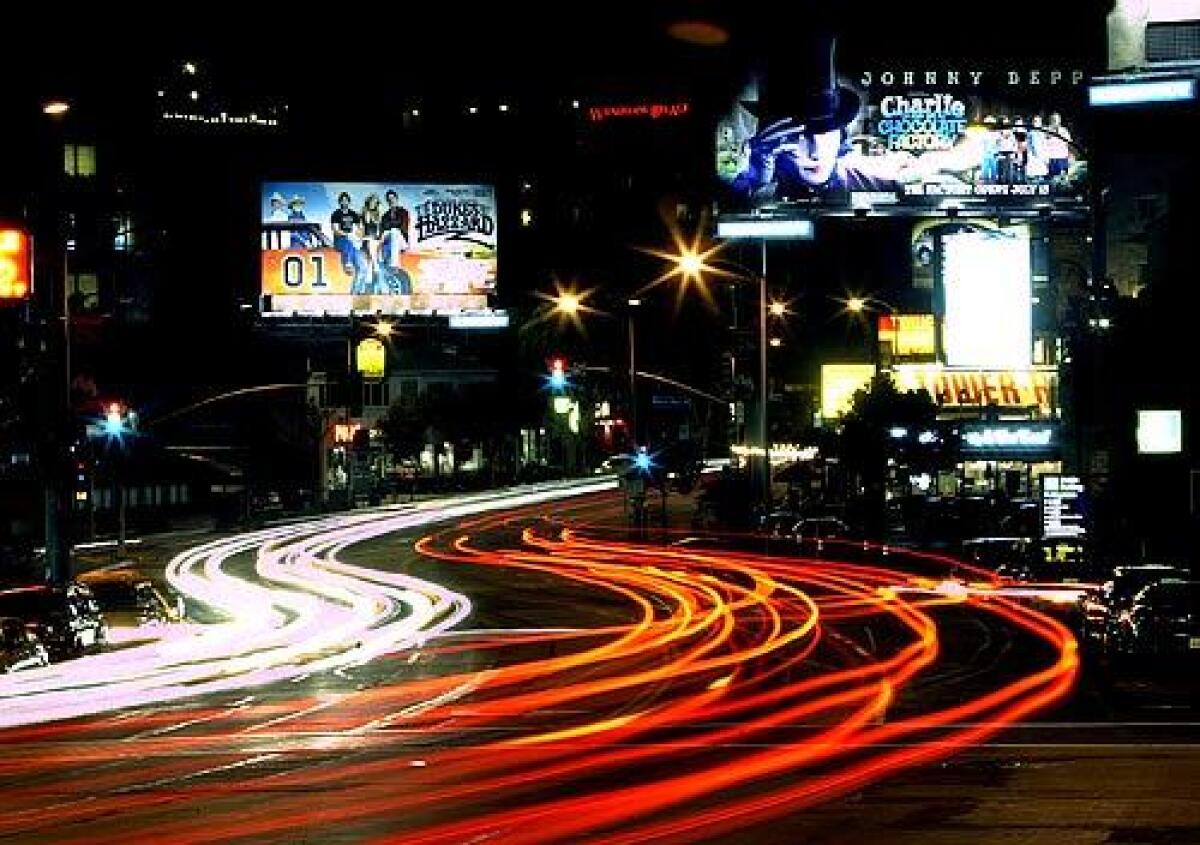The Strip of dreams

THE Sunset Strip is L.A.’s very own road to ruin, a mile and a half of super-sized billboards, wannabe stars and sharp turns where a dangerous whiff of Hollywood Babylon blows cold. F. Scott Fitzgerald ate his last meal on the Strip (at Greenblatt’s Deli), while the hearts of John Belushi (Chateau Marmont) and River Phoenix (Viper Room) simply gave out. It’s precisely this sort of glittery decadence that fuels the wanton myth of Hollywood and keeps those tourist dollars raining from the sky.
More than perhaps any other piece of road — with apologies to Hollywood and Vine and Route 66 — the Strip has a legendary status that it owes to literature, music and film. Songs like the Buffalo Springfield’s “For What It’s Worth,” movies like “Sunset Blvd.” and “Riot on Sunset Strip” and TV shows such as “77 Sunset Strip” or “Studio 60 on the Sunset Strip” have all greased the mythic wheels, creating a template for the fantasies of the world.
The truth is that the Strip, which runs between Crescent Heights Boulevard on the east and Doheny Drive on the west, has been a gridlock of flesh and steel since the 1920s. It was Las Vegas before Las Vegas existed (yes, the Vegas Strip was named after Sunset), and it has been a celebrity playground for nearly a century. Golden Age movie star haunts like the Trocadero and the Mocambo gave way in the 1960s to rock meccas like the London Fog and Pandora’s, which eventually stepped aside for the venerable Whisky and Roxy. These days, Bar Marmont, Skybar and the Standard have the heat.
The cars move more slowly than ever down Sunset’s winding path, yet there are clear signs that the Strip’s cool veneer is peeling away. Tower Records is suffering slow death by bankruptcy; meanwhile, across the street, Larry Flynt’s Hustler boutique has been around long enough to secure institutional status.
Still, if there’s ever a Sunset Strip apocalypse, it’ll probably happen at the Saddle Ranch. Maybe you remember this restaurant from the L.A. episode of “Sex and the City”: a tourist trap (with a mechanical bull!) that’s now become a hangout for faded reality “stars” who want to be recognized by out-of-towners with digital cameras. Here we have a case of life imitating artifice or, perhaps, an ironic form of payback — what America gave L.A. Either way, is it too late to give it back?
Sign up for The Wild
We’ll help you find the best places to hike, bike and run, as well as the perfect silent spots for meditation and yoga.
You may occasionally receive promotional content from the Los Angeles Times.



